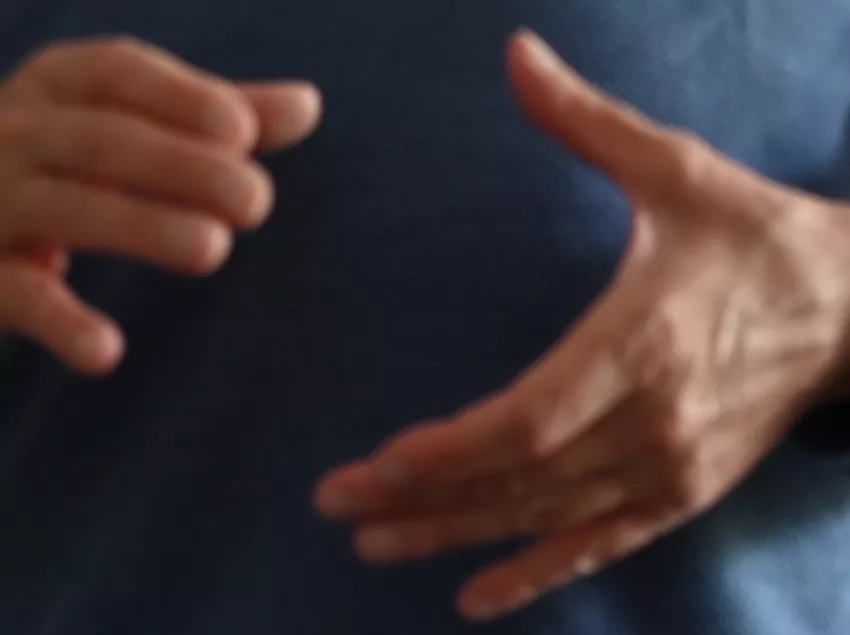Sign language is a full and independent language, just like spoken languages. However, many people – including professionals – still believe that it is only a copy or simplified version of spoken language. That is incorrect. Sign language does not come from schools or laws. It arises naturally when deaf people communicate with one another.
Wherever deaf people live together, work together, or meet regularly, sign language develops over time. It is a natural language that evolves through human interaction – not something invented or artificially created.
Today, there are more than 200 different sign languages around the world. Each one has its own structure, grammar, vocabulary, and history. In this article, we explain clearly and in detail how, where, and when sign languages emerged – based on facts, research, and in easy language that is accessible to deaf readers.
How Did Sign Language Develop?
Sign language develops wherever deaf people come together and need to communicate. This happens naturally – without anyone planning it. Over time, these individuals create signs and rules that help them understand each other. With more use, a full language with grammar, expressions, and meaning grows.
This process is similar to how spoken languages developed. Spoken language was also not invented in a lab or by politicians. It was shaped by everyday communication among people.
Sign language is not a system of made-up hand signals or pantomime. It is a complete language with its own grammar and syntax. For example:
- In German Sign Language (DGS), sentence structure is often different from spoken German.
- Facial expressions are part of grammar, not just emotions.
- Sign languages are visual, not auditory – and this changes how they work.
These features make sign languages unique and separate from the spoken languages used in their countries.
Where Did Sign Language Begin?
Sign languages did not start in one specific place. They developed independently in many regions across the globe. In each society where deaf communities existed, sign languages naturally formed – often without influence from other countries.
Here are a few examples of national sign languages:
- DGS – German Sign Language
- ASL – American Sign Language (USA, Canada)
- LSF – French Sign Language
- BSL – British Sign Language
- LIS – Italian Sign Language
- ÖGS – Austrian Sign Language
- JSL – Japanese Sign Language
Each of these languages is different. They are not automatically mutually understandable. For instance, American Sign Language (ASL) is not related to British Sign Language (BSL) – even though both countries speak English. ASL actually has historical roots in French Sign Language (LSF).
In Africa, Asia, and Latin America, there are also many regional sign languages. Some countries have several local sign systems, depending on community and tradition.
When Did People Start Using Sign Language?
Deaf people have always found ways to communicate. This means sign languages likely existed for thousands of years, even if we don’t have written records from ancient times.
Important moments in the history of formal sign language include:
- Ancient times: Records from Greece and Rome describe people using hand signs.
- 16th century (Spain): Spanish monk Pedro Ponce de León taught deaf children using signs.
- 1755 (France): Priest Abbé de l’Épée opened a school for the deaf in Paris. He observed natural sign language and began to teach with it, helping to develop LSF.
- 1817 (USA): Thomas Gallaudet brought LSF to America. With deaf teacher Laurent Clerc, he founded a school in Hartford. This led to the birth of ASL.
- 19th century (Germany): Schools for deaf children were founded, and German Sign Language (DGS) was used. Later, however, the oralism movement forced deaf students to speak and banned sign language in many schools.
In many countries, sign languages were banned or discouraged for long periods – especially during the 19th and 20th centuries. Only in the late 20th and early 21st century did official recognition begin. In Germany, DGS was officially recognized in 2002.
Tips: What Everyone Should Know About Sign Language
- There is no universal sign language. Each country (and sometimes region) has its own sign language. “International Sign” is used only at international events and is limited in vocabulary.
- Sign language is not acting or mime. It uses its own grammar, structure, and visual rules. It is as complex and rich as spoken languages.
- Not all deaf people use the same sign language. Even within a country, there can be different dialects, accents, or styles – just like with spoken languages.
- Learning sign language requires practice. Professional sign language interpreters study for years. It is not something you can learn overnight.
- Sign language gives access to information and society. Without it, many deaf people would be excluded from education, work, and culture.
- Facial expression and body movement are part of the grammar. They are not “extras” – they are essential to meaning and structure.
Conclusion: Sign Language Is a Human Right and a Cultural Treasure
Sign language is one of the oldest forms of human communication. It has existed in many forms wherever deaf people lived – long before modern schooling or linguistics.
It is not a tool, not a helper system, and not an imitation of spoken words. It is a natural language, shaped by generations of deaf people. It connects communities, builds identity, and opens doors.
Despite long periods of discrimination and bans, sign languages have survived. Today, they are stronger than ever and are gaining more recognition and respect – especially through deaf advocacy and awareness.
Final tip: If you want to connect with deaf people, consider learning their language. Taking a sign language course is not only helpful – it’s also a powerful way to show inclusion, curiosity, and respect.


